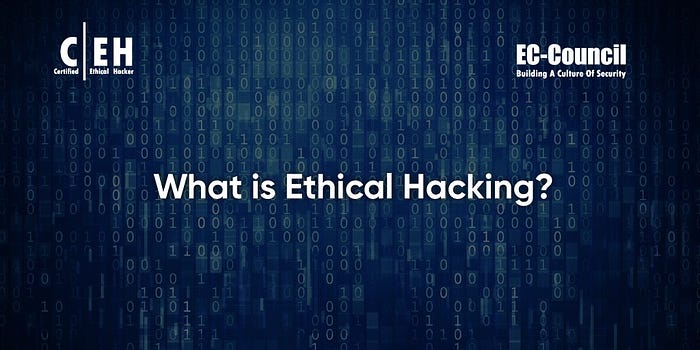
Inan increasingly digital world, cybersecurity is more critical than ever. Ethical hacking, also known as penetration testing or white-hat hacking, plays a vital role in protecting organizations from cyber threats. But what exactly is ethical hacking, and how does it differ from malicious hacking? In this article, we’ll explore the basics of ethical hacking, its importance in cybersecurity, and how ethical hackers help safeguard systems from attacks.
1. What is Ethical Hacking?
Ethical hacking is the practice of intentionally probing computer systems, networks, or applications to find vulnerabilities that could be exploited by malicious hackers. Ethical hackers are authorized by organizations to perform these tests, with the goal of identifying and fixing security flaws before they can be exploited by bad actors.
While malicious hackers, known as black-hat hackers, aim to break into systems for personal gain or harm, white-hat hackers work to protect these systems by finding and fixing vulnerabilities.
2. Key Types of Ethical Hacking
Ethical hacking involves various techniques and strategies to test different aspects of a system’s security. Some of the key types of ethical hacking include:
- Network Hacking: Testing network infrastructure, routers, firewalls, and devices connected to the network to ensure there are no security holes.
- Web Application Hacking: Identifying vulnerabilities in websites and web applications that could allow hackers to gain unauthorized access.
- System Hacking: Testing individual systems or servers to find weaknesses in operating systems or applications.
- Social Engineering: Testing how well employees or users can resist manipulative tactics that trick them into giving up sensitive information.
These methods help organizations gain a comprehensive understanding of their security weaknesses.
3. The Ethical Hacking Process
The ethical hacking process follows a structured approach to simulate a real-world attack while ensuring no actual harm is done to the system. Here’s a brief overview of the key steps:
- Reconnaissance (Footprinting): Gathering information about the target system, including network topology, IP addresses, and available services.
- Scanning and Enumeration: Using tools like Nmap to scan networks for open ports and services that could be exploited.
- Gaining Access: Simulating attacks to test whether vulnerabilities can be exploited to gain unauthorized access to the system.
- Maintaining Access: Determining if an attacker could maintain their access to a compromised system over time without detection.
- Covering Tracks: Testing if logs and traces of the attack can be hidden, which could prevent detection of the breach.
The goal of these steps is to uncover weaknesses and recommend fixes to improve overall security.
4. Importance of Ethical Hacking in Cybersecurity
Ethical hacking is essential for organizations to stay ahead of cybercriminals. Here’s why it’s so important:
- Identifying Vulnerabilities: Ethical hackers help find security weaknesses before malicious hackers can exploit them, allowing organizations to fix these issues proactively.
- Testing Defenses: By simulating real-world attacks, ethical hackers test how well security measures perform and whether they can withstand different forms of cyber threats.
- Compliance and Regulations: Many industries require regular penetration testing to comply with security standards and regulations, such as GDPR or PCI-DSS.
- Building Trust: Demonstrating strong cybersecurity practices, including ethical hacking, helps businesses build trust with clients, customers, and stakeholders.
5. Tools Used in Ethical Hacking
Ethical hackers use a wide range of tools to conduct penetration tests and analyze system vulnerabilities. Some popular ethical hacking tools include:
- Nmap: A network scanning tool used to discover hosts and services on a computer network.
- Metasploit: A penetration testing framework that helps ethical hackers develop and execute exploits.
- Wireshark: A network protocol analyzer that captures and analyzes network traffic.
- Burp Suite: A web vulnerability scanner that helps identify weaknesses in web applications.
- John the Ripper: A popular password cracking tool used to test password strength.
These tools allow ethical hackers to explore and assess system security comprehensively.
6. Becoming an Ethical Hacker: Skills and Certifications
If you’re interested in becoming an ethical hacker, there are specific skills and certifications that can help you get started:
Skills Needed:
- Knowledge of programming languages like Python, Java, or C.
- Understanding of networking protocols (TCP/IP, DNS, etc.).
- Familiarity with operating systems, especially Linux.
- Problem-solving skills and the ability to think like a hacker.
Certifications:
- Certified Ethical Hacker (CEH): A globally recognized certification that validates your knowledge of ethical hacking techniques.
- Offensive Security Certified Professional (OSCP): A hands-on certification that focuses on penetration testing skills.
- Certified Information Systems Security Professional (CISSP): A broad certification that covers various aspects of cybersecurity.
These certifications can help you build a solid foundation in ethical hacking and cybersecurity.
Ethical hacking plays a critical role in safeguarding modern organizations from cyber threats. By simulating attacks and identifying vulnerabilities, ethical hackers help protect sensitive information and systems from potential breaches. As the cyber landscape continues to evolve, the demand for skilled ethical hackers will only grow, making it an exciting and rewarding field for those passionate about cybersecurity.





0 Comments